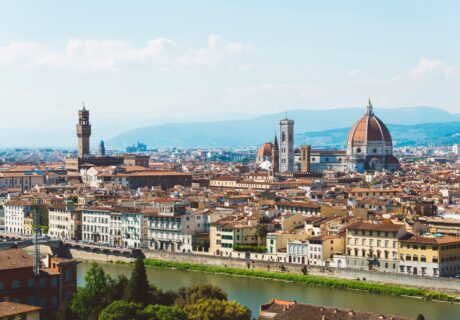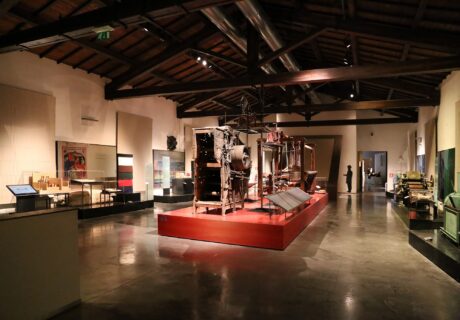In the footsteps of Napoleon on the Island of Elba
4 min · 30 May 2023

The Island of Elba, in addition to its beautiful crystal-clear sea and numerous excursion activities, also offers a lot of history. In particular, it is famous for having hosted Napoleon Bonaparte during his first exile from France, from 4 May 1814 to 26 February 1815. More than 200 years have passed since the French Emperor landed in Portoferraio, yet his traces are still visible everywhere.
But what are Napoleon’s places on the Island of Elba? Let us discover them together.
MILL BUILDING
The main Napoleonic site on the Island of Elba is undoubtedly the Palazzina dei Mulini, also known as the Villa dei Mulini, chosen by the Emperor as his main residence for public life and representation. Situated in Portoferraio, in the square that inevitably bears its name, the structure was chosen for its strategic position, which allowed a wide view of the sea and thus to keep any landings of boats under control. Built in 1724 by Grand Duke Gian Gastone de’ Medici, it was readapted according to Napoleon’s needs by the Livorno architect Paolo Bargigli. Although the original furniture has been lost, the sober residence still retains relics, furnishings and furniture from the Napoleonic era and part of the interesting library. Today, the building, together with Villa San Martino, is home to the National Museum of Napoleonic Residences.
VILLA SAN MARTINO
Instead, he chose Villa San Martino, also known as Villa Bonaparte, as his summer residence. Also located in Portoferraio, but in San Martino, it was not inhabited by Napoleon for long due to his departure from Elba. The most important rooms are: the Egyptian Room, decorated with hieroglyphics and pyramids; and the Love Knot Room, with a splendid fresco celebrating the Emperor’s union with Maria Luisa of Austria. Surrounded by a large park, it is worth a visit for the neoclassical Demidoff Gallery, built by the Russian prince who married Napoleon’s niece, Matilda Bonaparte. Nineteenth-century prints and furnishings of the period can be admired here, but the highlight is the famous sculpture of Galatea by Antonio Canova, whose model appears to have been Paolina Borghese. Villa San Martino is also home to the National Museum of Napoleonic Residences.
CHURCH OF MERCY AND MUSEUM OF NAPOLEONIC RELICS
Another place linked to Napoleon is the Church of the Misericordia, known as the Church of San Cristino, where a mass is celebrated in his suffrage every 5 May. Located along the Napoleonic steps in Portoferraio’s historical centre, it was built in 1677 and houses the relics of San Cristino, the martyr patron of Portoferraio. Historical relics include a valuable pipe organ dating back to 1792 and an altarpiece from 1793 depicting the Madonna of Mercy with Saint Cristino and Saint Cerbone. Adjacent to the church is the Museum of Napoleonic Relics, which houses objects, vestments, sacred vessels and furnishings from the 18th and 19th centuries. Among the most important objects are: a bronze mask of Napoleon dying; the bronze cast of his right hand, donated by the Musée de l’Armée in Paris; and the flag with the three bees embroidered in gold thread that Napoleon donated to Elba on 4 May 1814.
OTHER PLACES
Other Napoleonic sites on the island include: the Teatro dei Vigilanti in Portoferraio, built between 1814 and 1815 on the initiative of Napoleon himself, where important theatrical and musical events can still be attended today, even at an international level; the Sanctuary of the Madonna del Monte in Marciana, where the Emperor hosted the fascinating Polish lover Maria Walewska; the Fountain of Napoleon near the village of Poggio, which is said to dispense beneficial properties; and the rock known as Napoleon’s Chair near the village of La Zanca, where the French general used to sit to admire his beloved Corsica nostalgically.








